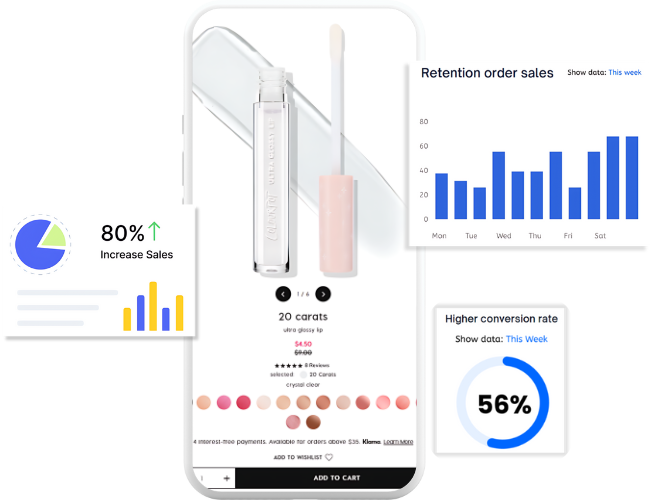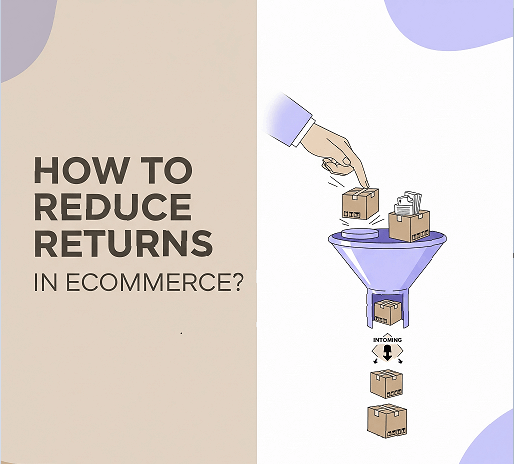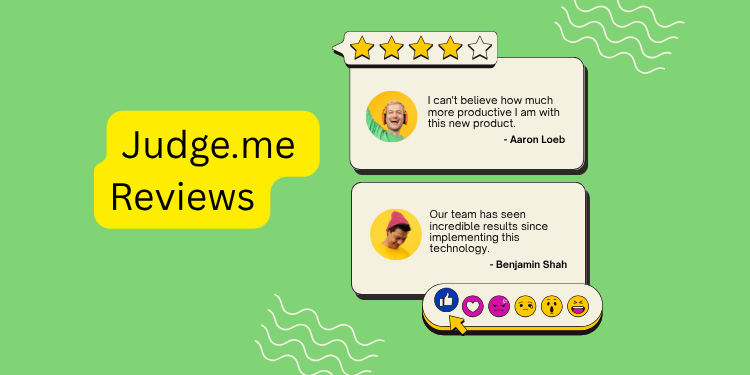More and more people have the idea of starting their own business to earn more money. For novice entrepreneurs, looking for a proper an e-commerce platform to create an online storefront is a good option.
Etsy and Shopify are both industry-leading platforms that let you get started quickly and have a full-fledged store in a week.
There are some important differences between Shopify and Etsy. To guide your business, this article introduces the advantages and disadvantages of the two platforms.
You can use either e-commerce solution to start a business based on your reality and increase profits.
Etsy Overview
Etsy is a popular online marketplace known for its focus on handmade, vintage, and unique factory-manufactured items. Here are some of the key pros and cons of using Etsy for selling and buying
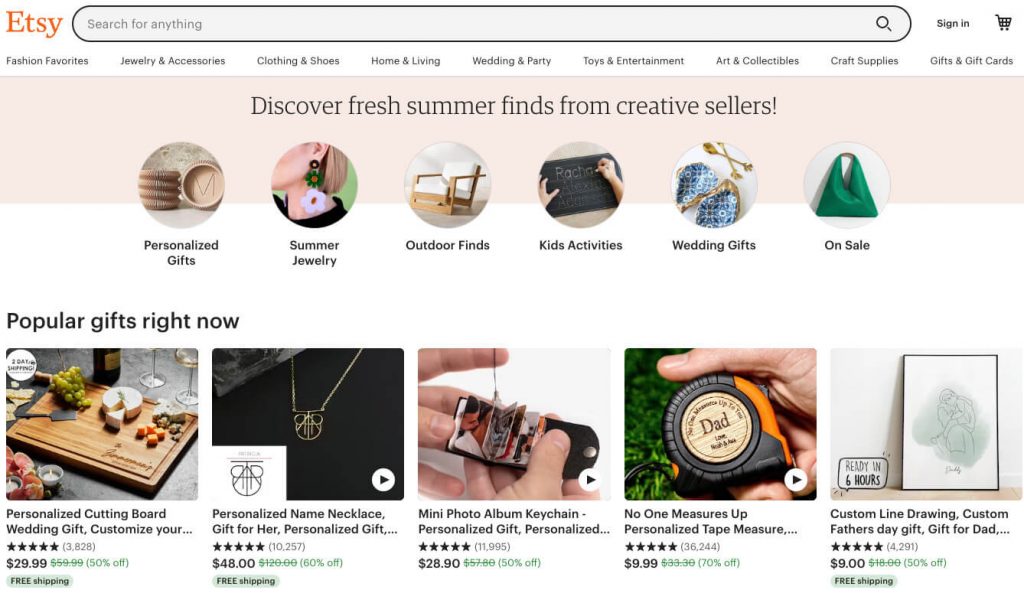
Pros of Etsy
Cons of Etsy
Why choose Etsy?
Rather than thinking of Etsy as a platform that hosts a website, think of it as a marketplace that brings together buyers and sellers of handmade goods and services.
You can create your store according to your needs, and then upload your product information to the store page, and customers can purchase the products they need through.
Etsy offers significant benefits for both sellers and buyers, making it a popular platform for unique and handmade goods.
For sellers, it provides access to a niche market, user-friendly tools, and a built-in audience, while buyers enjoy a wide variety of unique products, customization options, and a secure shopping experience.
Shopify Overview
Shopify is one of the leading e-commerce platforms, offering a range of features and benefits that make it a popular choice for businesses of all sizes. Here are some of the key pros and cons of using Shopify
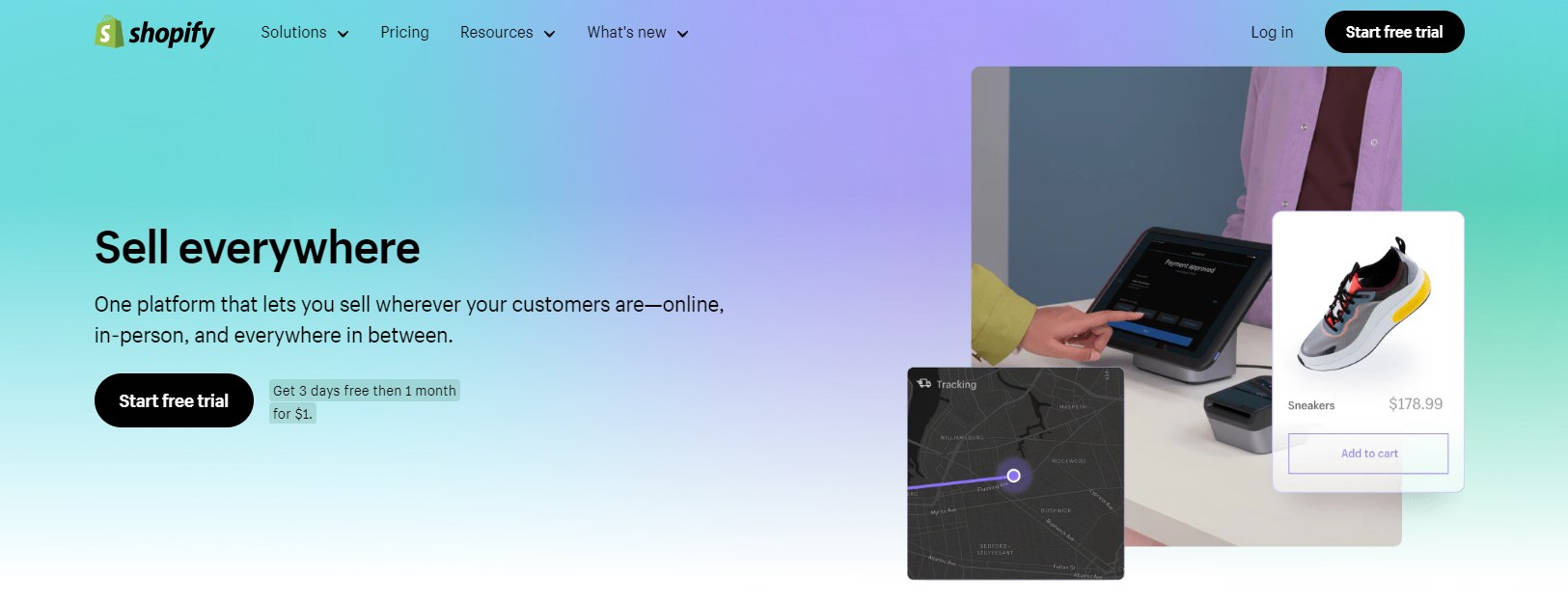
Pros of Shopify
Cons of Shopify
Why choose Shopify?
Businesses choose Shopify for its customer-centric benefits, ensuring profitability.
With intuitive setup and management, even non-tech users thrive. Its vast app ecosystem offers tailored solutions for diverse needs, while scalability accommodates growth without hassle.
Shopify’s security and reliability build trust, enhancing customer confidence.
Combined with robust support and mobile optimization, it ensures a seamless, profitable customer experience.

Etsy vs. Shopify
1. Etsy vs. Shopify: Pricing
Shopify offers several pricing plans to accommodate businesses of all sizes and needs:
- Basic Shopify: Starting at $29 per month, this plan includes all the essentials to set up a new online store, including a website and blog, unlimited products, 24/7 support, and more.
- Shopify: Priced at $79 per month, this plan includes additional features such as gift cards, professional reports, and abandoned cart recovery to help businesses grow and scale.
- Advanced Shopify: Starting at $299 per month, this plan is designed for businesses with high-volume sales. It includes advanced features like third-party calculated shipping rates, an advanced report builder, and up to 15 staff accounts.
- Shopify Plus: Tailored to enterprise-level businesses, Shopify Plus offers custom pricing and features, including dedicated account management, enhanced security, and API support for seamless integration with existing systems.
Additionally, Shopify offers a 3-day free trial for users to explore the platform and its features before committing to a paid plan.
Etsy offers a straightforward pricing structure for sellers:
- Listing Fee: $0.20 per item listed. Listings are active for four months or until the item is sold.
- Transaction Fee: 5% of the total sale, including the item price, shipping costs, and gift wrapping charges.
- Payment Processing Fee: 3% + $0.25 for each transaction processed through Etsy Payments.
- Optional Etsy Plus Subscription: $10 per month. This subscription includes perks such as listing credits, advanced shop customization options, and advertising credits.
Keep in mind that these fees are subject to change, so it’s essential to check Etsy’s official website for the most up-to-date pricing information.
2. Etsy vs. Shopify: Web builders
On Shopify, a customizable web-based website builder is provided to help you quickly build your own website.
With user-friendly website design, you have the freedom to add products, edit images, text, and pricing, as well as add other pages or sections to your website with virtually no restrictions.
This is a benefit you cannot enjoy on other platforms.
To simplify your design steps, you can choose to start with a template and then customize it to your needs, all without any coding knowledge.
Shopify gives you access to a fully integrated experience, freeing you from the many technical steps of setting up a website.
This will greatly reduce your operating costs, allowing you to focus more on the operation of your store to gain more revenue.
On Etsy, your digital storefront is called an Etsy Shop. Etsy shops are a perfect fit for the Etsy marketplace and look somewhat similar.
Store owners can set eye-catching store banners and signs, as well as store announcements according to their own needs.
These are necessary marketing tools, such as having a welcome message at the top of your store page. When your users enter, they will feel welcome and can freely shop on the website.
3. Etsy vs. Shopify: SEO and marketing
You need to optimize your Shopify store to improve its visibility and ranking on search engine results pages (SERPs).
By implementing effective SEO strategies, you can attract more organic traffic, increase brand awareness, and ultimately drive sales. Key aspects of Shopify SEO include:
- Keyword Research
- Optimized Product Pages
- Site Structure and Navigation
- Page Speed and Mobile Optimization
- Content Marketing
- Link Building
- Technical SEO
- Analytics and Monitoring
But don’t worry, the Shopify app store offers plenty of apps that can optimize your store’s SEO results.
For example, SEOAnt, a free SEO app, can check your store’s SEO performance and automatically help you optimize it.
When you use the Etsy marketplace, you need to know that your potential customers will be constantly searching and browsing the site, becoming your huge lead market.
According to SEMRush, Etsy is a top 200 website in the world, attracting more than 600 million visitors each month. This means there will be organic traffic flowing to your store without you having to do anything.
Since millions of people already visit Etsy and know Etsy pricing, you just need to make your products stand out and easy to find.
When customers find that the products they need are in your store, new transactions will be concluded inadvertently.
4. Etsy vs. Shopify: Security
Security is an important concern for most users.
Shopify, as a leading e-commerce platform, attaches great importance to security, takes systematic measures to protect merchants and customers, and protects merchants on the platform to the greatest extent.
It features advanced and modern protection tools to ensure data integrity and confidentiality by employing strong measures such as PCI compliance, SSL certificates, and regular security assessments.
This greatly increases the security level of this platform and enhances its competitiveness among users.
In addition, Shopify provides users with security tools such as fraud analysis, two-factor authentication, and setting employee permissions to further protect business and customer information.
Likewise, security is an important issue on the Etsy platform.
Etsy also does a good job of providing industry-leading security standards for all buyers and sellers, such as designing many confidentiality mechanisms to help protect users.
It includes measures such as SSL encryption to protect sensitive information during transactions, meaning both parties can transact freely on the platform without any worries.
Additionally, to prevent account theft, Etsy offers two-factor authentication to ensure your account is as secure as possible.
5. Etsy vs. Shopify: Mobile applications
The Shopify mobile app is impressive, thanks to its awesome features and services.
You can use this app to create an entire online store through your mobile phone, where you can freely add, change and improve product information without worrying about complicated steps and high operating costs.
It also offers the ability to track sales, payments, fulfillment and update the website. Shopify mobile is highly adaptable and works on both Android and iOS devices.
This means that no matter what type of user you are, you can use the app to realize your entrepreneurial aspirations and provide customized services to your customers.
If you are interested in this app, you can try out some functions first to test whether it meets your requirements.
Etsy has also developed a mobile application to provide customized mobile services for buyers and sellers, allowing users to use the app’s services to operate their stores anytime and anywhere.
The Etsy Seller app for Android and iOS helps sellers message buyers, manage orders, track shipments, and update listings from anywhere.
This means you don’t have to worry about not being able to manage your store due to equipment and distance, but you can achieve your business goals as much as possible.
6. Etsy vs. Shopify: Shipping discounts
Items ordered by the customer are subject to shipping charges, all shipping charges will be added to the customer’s order at checkout.
Etsy’s shipping fees will be charged at 6.5% of the order total. This fee settlement rule applies to the total cost of the item, as well as the cost of shipping and gift wrapping (if any).
If there are separate fees, you will see them clearly stated on your payment account. Shipping discounts on this platform can reach Up to 30%.
In comparison, Shopify’s shipping discounts are much larger, reaching up to 77%-88%, which greatly reduces the burden on customers to a certain extent.
You can choose from a variety of shipping costs and methods for customers to choose from to complete the transaction smoothly.
After a customer places an order, you can also specify the available shipping methods based on the contents of the customer’s shopping cart to provide customers with customized services.
Flat shipping also has its own benefits, which can help you manage all orders in a unified manner to reduce your operating costs.
If you can offer relatively reasonable shipping discounts, your sales will grow steadily.
Shopify vs. Etsy: Which is better for your business?

What’s clear is that Shopify is the clear winner when it comes to cost savings, significantly reducing your operational costs.
But you should conduct a comprehensive evaluation before making the right choice, which ultimately depends on your specific product, audience, and budget.
If you’re a store looking to expand your operations beyond handmade or vintage products, Shopify is the best eCommerce platform for you.
It will provide you with Shopify plans based on your specific situation, rather than just an electronic addition.
Shopify saves you money overall, thanks to lower transaction fees. Shopify offers you high shipping discounts under every plan, which can save those shipping physical products a lot of money in the long run to increase overall revenue.
Etsy is a great option for new sellers who are new to the market and have little or no budget.
The services it provides are free and simple. Although it cannot provide more systematic and comprehensive services, the price of Etsy plans is low.
Those with lower sales can focus on launching their products without having to worry about monthly fees.
For sellers selling handmade goods, antiques, and crafts, it provides a more focused audience that can help those without a brand following.
Can you sell your Shopify products on Etsy?
Of course, you can also sell your products on both platforms. However, the fact is it is more or less manual work, there is no automation integration to cushion the whole process. Here’s how you can do it
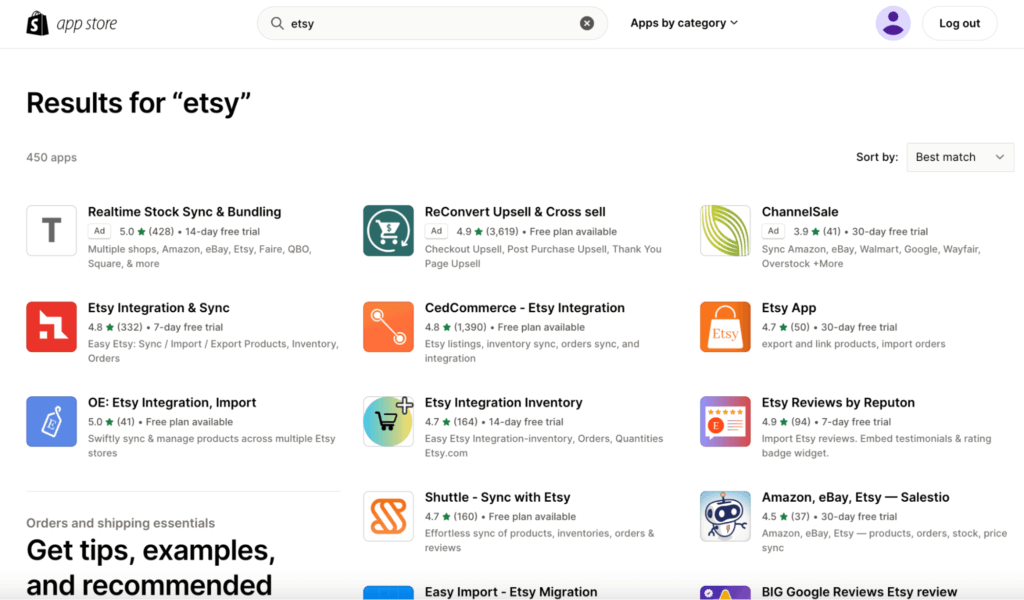
Step1: Create Your Products on Shopify
The first step will be to create a Shopify store, which will be the main platform where customers will be able to purchase our products. A dedicated product page will be created by featuring a title, listing, description, image, and pricing sections.
Step2: Download the Product CSV File
To submit your Shopify product to the marketplace use CSV format to export it. The purpose of this document is to give one the information on everything that our products have to offer.
Step3: Prepare Product Listings on Etsy
Sign in to your Etsy account and click on ‘Add a new listing’ to find the screen. Specify essential details for each product: title, description, category, price, and delivery arrangements.
Step4: Upload Product Images
Upload product images to Etsy that match synonyms on Shopify. Communications should include information on image quality and resolution to respect Etsy’s guidelines.
Step5: Import Product CSV File to Etsy
Etsy provides a bulk listing tool. It allows you to import text records to generate product listings from CSV files. Use this tool to upload the CSV file that you have exported from Shopify. Map its fields to match Etsy’s listing requirements.
Step6: Review and Publish Listings
After importing data, review each listing to ensure it’s complete and accurate. After that Adjust as needed, then publish listings to your Etsy store
Step7: Sync Inventory and Orders
Integration of Shopify and Etsy is not direct. Hence, you will need to do inventory levels updating and order managing on each portfolio.
How Does Integrating Etsy and Shopify Benefit Your Business?
Integrating Etsy and Shopify significantly expands market reach and simplifies business management.
By using third-party applications like “Etsy Integration & Sync by CedCommerce” or “Shopify Connector by LitCommerce,” you can achieve automatic synchronization of products, inventory, and orders, ensuring consistent information across both platforms.
Social media promotion, content marketing, and paid advertising (Etsy Ads, Facebook, and Google Ads) enhance product visibility and sales.
Providing excellent customer service through timely responses, clear return policies, and encouraging customer reviews enhances the customer experience.
This integration leverages the strengths of both platforms, optimizes operational efficiency, and drives business growth.
What’s Next?
In conclusion, choosing between Etsy and Shopify depends on your specific business needs, goals, and preferences.
Consider your target audience, budget, long-term growth strategy, and desired level of control when making your decision.
Whichever platform you choose, remember to leverage its features effectively to maximize your success in the competitive world of e-commerce.
FAQs About Shopify vs Etsy
Note: This blog was originally written in English and translated using an automated tool to make the content accessible to a global audience. We believe in sharing valuable insights with everyone and apologize for any inaccuracies. If you spot any errors, please feel free to contact us for corrections. Your feedback helps us improve and ensures the content’s value is fully realized.

Zero Tan
Content Specialist
As an eCommerce content creator, I aim to share insights, trends, and strategies that may help you navigate the digital marketplace more effectively. My content is designed to provide practical value and inspiration, supporting your business growth and helping you stay informed about industry developments.

